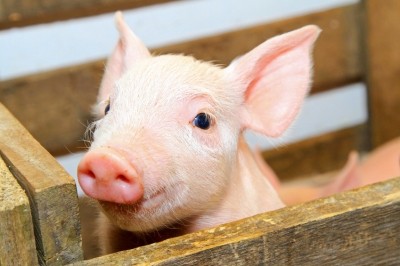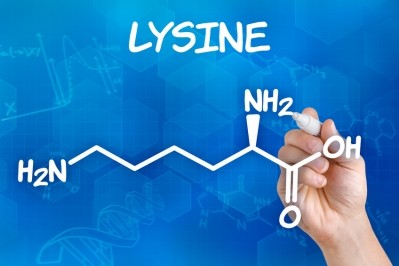Special Edition: R&D trends in vitamins, minerals, amino acids and yeast cultures
U of Illinois researchers seek value in amino acid by-products

A team of scientists with the Department of Animal Science at the University of Illinois at Urbana-Champaign is considering further examination of the nutritional value of by-products created during amino acid synthesis, after positive results were generated in a study looking at threonine biomass.
Hans Stein, professor of animal sciences at that institution, told FeedNavigator, future work will include studies on the biomass created during manufacture of other amino acids, like tryptophan, for use in animal feed.
In an expansion of an original research project, the team has already been investigating the value of lysine production by-products, he said.
“We did complete research with a co-product from a different biomass product based on the synthesis of a different amino acid,” he said. “The results from that experiment were similar to the results from the (initial) experiment – confirming the biomass from amino acid production is well digested and a good feed ingredient,” said Stein.
Ongoing amino acid research
In the original research, Stein’s team carried out work on threonine biomass (Thr), which is generated during the production of crystalline threonine.
Their work tested the by-product as a potential replacement for fishmeal in swine diets where it compared favorably.
“The amino acid threonine is an indispensable one for pigs and chickens”, he said. “But when companies produce it, they also generate this biomass by-product that contains quite a bit of amino acids (AA).”
The co-product also has high levels of crude protein (CP) so the team thought that it could be used as a feed additive in its own right, he said. Prior to Stein and his group’s research, there had been scant evaluation of the co-product’s nutritional value.
Study goals and details
The team ran two different experiments.
In the first trial, nine pigs were equipped with a T-cannula in the distal ileum and allotted to a triplicated 3 × 3 Latin square design with three diets and three periods in each square to analyze the apparent ileal digestibility (AID) and the standardized ileal digestibility (SID) of CP and AA.
One diet contained 20.0% Thr biomass as the sole source of AA, and a second diet contained 25.0% fish meal as the sole source of AA. The last diet was an N-free diet that was used to measure basal endogenous losses of AA and CP.
The researchers concluded that the concentrations of CP, amino acids and Thr were greater in the biomass than in the fish meal, as was the apparent ileal digestibility for all indispensable amino acids, except tryptophan.
Similarly, the standardized ileal digestibility for CP, indispensable amino acids, except tryptophan was greater in the Thr biomass than the fishmeal.
In the second experiment, 24 pigs were placed in metabolism cages and randomly allotted to three diets. The first diet contained 96.4% corn, the second 79.3% corn and 17% Thr biomass, and the third diet contained 75.3% corn and 24% fish meal.
Total collection of feces and urine was performed for five days after a five day adaptation period, and all samples of ingredients, diets, feces, and urine were analyzed for gross energy. Digestible energy (DE) and metabolizable energy (ME) were then calculated.
The researchers found the gross intake energy was greater for the pigs getting either the biomass or the fishmeal than for those getting the corn diet.
The diet with Thr biomass had less apparent total track digestibility of gross intake energy than the fishmeal, but the DE of the biomass was greater than for the fishmeal. Additionally, the ME values were higher for the biomass than the fishmeal.
“The Thr biomass that was used in the present experiment was a rich source of CP and indispensable AA that were more digestible than the AA in fish meal. The Thr biomass contained more DE and ME than yellow dent corn and fish meal,” concluded the researchers after both experiments. “Pigs consumed the diets containing the Thr biomass without leaving orts, and no apparent problems with palatability are expected if the Thr biomass is included in diets for pigs.”
The original research project was funded by the Archer Daniels Midland Company.
Inclusion rates
Growth assays are still needed to determine the optimal inclusion rate of the Thr biomass, said the US researchers.
“We believe we have characterized this particular co-product, but because we discovered it is pretty valuable we’d like to work with the co-products of other amino acids that are being synthesized and used in the animal feed industry,” said Stein.
Source: The Journal of Animal Science
Title: “Amino acid digestibility and concentration of digestible and metabolizable energy in a threonine biomass product fed to weanling pigs”
Published online ahead of print: DOI: 10.2527/jas.2013-6635
Authors: F.N. Almeida, R.C. Sulabo, H.H. Stein













